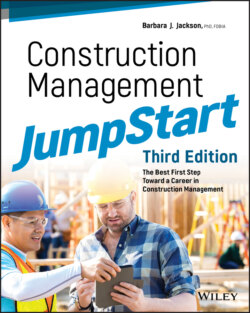Читать книгу Construction Management JumpStart - Barbara J. Jackson - Страница 27
The Age of the Skyscraper
ОглавлениеDuring the late 1800s, the production of steel and electricity really took center stage as factors that would influence the construction industry in a big way. It was a time of immense growth in building technology. Steel framing replaced iron framing and allowed for high-rise building. Portland cement and reinforced concrete were invented. Glass was now being mass-produced and was used to clad many of these new building frames. The dream of constructing tall buildings reaching to the sky became a reality when E.G. Otis invented the first passenger elevator. Building skyscrapers was seen as a way to conserve land as the pace of growth in American cities became a concern. Technological advancements in building science continued, electric power became commonplace in all structures, and advancements in heating and cooling systems made life easier for people in all climates of the world.
Construction started showing up as big business during this time. Although most building was still being performed by small and medium-sized companies, much larger organizations were forming, and the globalization of the construction industry had begun. Opportunities for extensive projects in housing, industry, transportation, and city development were popping up all over the world. The construction industry developed into a major economic sector.
